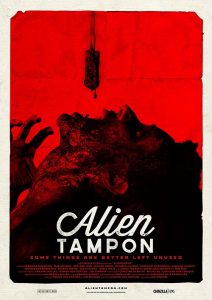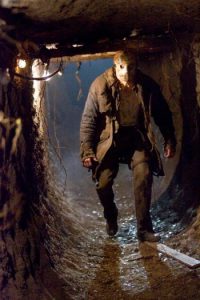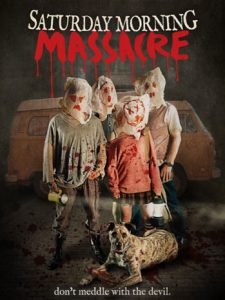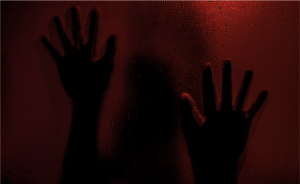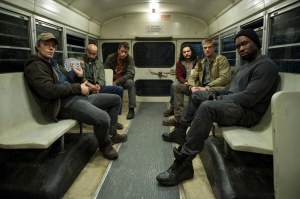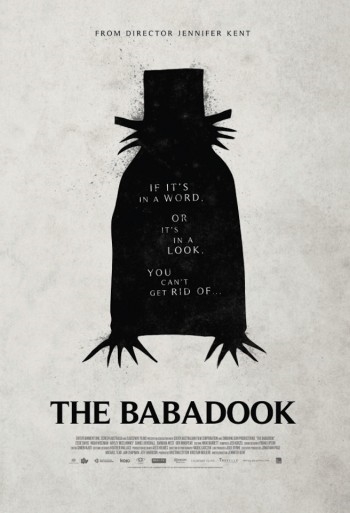
The Babadook Movie Review [Stanley Film Festival]
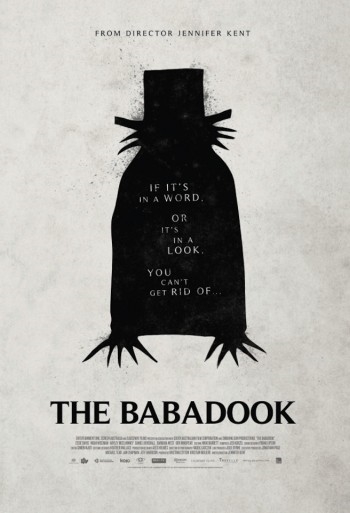 Director Jennifer Kent, in her first full-length feature, has crafted a lovely, dark and often creepy story about death and mourning through the mechanism of a seriously unsettling children’s book character. The Babadook is a film that is executed on a very high level: the emotions are raw and real, the scares are built-up and not stock, and the menace feels (at times) very heavy. It is beautifully shot and confidently paced without having to resort to what might have been easier choices along the way as far as letting the audience in on what is really happening.
Director Jennifer Kent, in her first full-length feature, has crafted a lovely, dark and often creepy story about death and mourning through the mechanism of a seriously unsettling children’s book character. The Babadook is a film that is executed on a very high level: the emotions are raw and real, the scares are built-up and not stock, and the menace feels (at times) very heavy. It is beautifully shot and confidently paced without having to resort to what might have been easier choices along the way as far as letting the audience in on what is really happening.
The film centers around Amelia (the excellent Essie Davis), a single mother struggling with a challenging, spirited son Sam (Noah Wiseman) and the ever-present sadness of her husband’s death on the day Sam was born. Amelia is “coping” the best way she can, but with Sam’s eccentricities, a too-large home to maintain, a nursing home job that clearly doesn’t pay enough, and a collection of people on the periphery (kind neighbor, obnoxious sister and her daughter, innocently amorous co-worker) who just seem to pile on, the balancing act is not an easy one.
Sam, in particular, is the greatest source of stress and frayed nerves for Amelia. He is, at times, charming and sweet and innocent. Other times he is a screeching terror – with all the irrationality of a child coupled with a hyperactive imagination, a penchant for building “monster killing tools,” and an inability to relate to other kids in or out of school. He is a constant grind on Amelia’s ability to live a normal life or try to move forward from the tragedy surrounding Sam’s birth. This is shown in subtle ways early on: when we see Amelia and Sam eating at the dinner table, the shot is framed to highlight the empty spot. When Amelia is trying to sleep, the spot where her husband should be is taken up by a fidgeting, teeth grinding, disruptive Sam. But as the story expands, the void where her husband should be is basically in every scene – dealing with the Australian version of Child Protective Services in one, dealing with grating school officials in another. It feels like every part of her life has this spectre of tragedy hung over it in an inescapable way. And everyone around her sees it and seems, collectively, unable to do anything for her.
During one bedtime sequence, Sam picks a book off his shelf for her to read – Mr. Babadook. The book, not even trying to look innocent with its blood-red binding and beautiful, haunting imagery and pop-up mechanics, puts a scare into Sam and puts Amelia on edge. Where did this book come from? What does it mean? She doesn’t have a lot of time to ponder it, though, because Sam latches onto this concept and becomes fearful at every turn, all the while freaking other children out and creating a constant buzz in the ear of his long-suffering mother. Sam is so fixated on this evil character and the harm it could bring that he serves almost as the film’s harbinger of doom, warning his mom about not letting the Babadook in and that you can’t get rid of him once he arrives.
This proves prophetic because the Babadook does arrive at their home, playing and teasing the edges of the field of vision initially and growing bolder and scarier as it goes. This is all handled through Amelia’s lens and from her perspective. This challenges the viewer, too, because we’ve grown to understand that Amelia is not the most reliable person at this point so what she sees and how she reacts is subject to some level of scrutiny. That takes nothing away from the sheer freakiness of the Babadook’s presence and menace in their lives. His aggressive and mean-spirited taunting of Amelia and of Sam feels cruel, personal, and very real. But again, we have to balance that with what we know of Amelia’s instability and try to weigh one against the other. Did the book reassemble itself after being torn up and thrown away or are we seeing things that aren’t there, just as Amelia is? Is this thing just out to get anyone, or, it is only in the game for Amelia and Sam?
The final act of the film pushes the viewer strongly and boldly to work backward and understand what it is that has happened and what it really might be. This isn’t accomplished with an obnoxious recapping of scenes flashing by, nor is it done in a cheap way that inserts stuff you didn’t see because it wasn’t there in the first place. The challenge to the viewer is to take stock of it all as objectively as you can with the aid of having everything explained in detail. Director Jennifer Kent – who also wrote the screenplay – seems to give the viewer some credit during the final frantic and seriously freaky charge to the finish. Instead of expecting the viewer to be tone-deaf or to have forgotten most everything to that point, Kent expects you to have woven together the freaky and sad moments without telling you in detail what it all means.
This trust in the story, and by extension trust in the audience, is a welcome approach that I wish more horror and thriller directors would employ. The same can be said for the use of color and darkness and sound cues and music: all feel well thought out, decisive, and creative without being cute about it. The colors of the home have a slight wash of black mixed in with the blues and whites, whereas the nursing home’s blues feel cleaner, more heavenly. The edits that stop and start on music and sound cues are crisp and smart and not made with a wink at the audience.
This is a film that mixes strong-minded storytelling with a clear dedication to craft. Both feel important and neither one suffers at the hands of the other. The film is sad and challenging and creepy and dynamic, all while never cheating its characters or the overall story in pursuit of a jump scare or a “gotcha” reveal.
It is mature and patient and it is, without a doubt, one of the best horror films this year.
[springboard type=”video” id=”920627″ player=”hmca001″ width=”610″ height=”400″ ]



